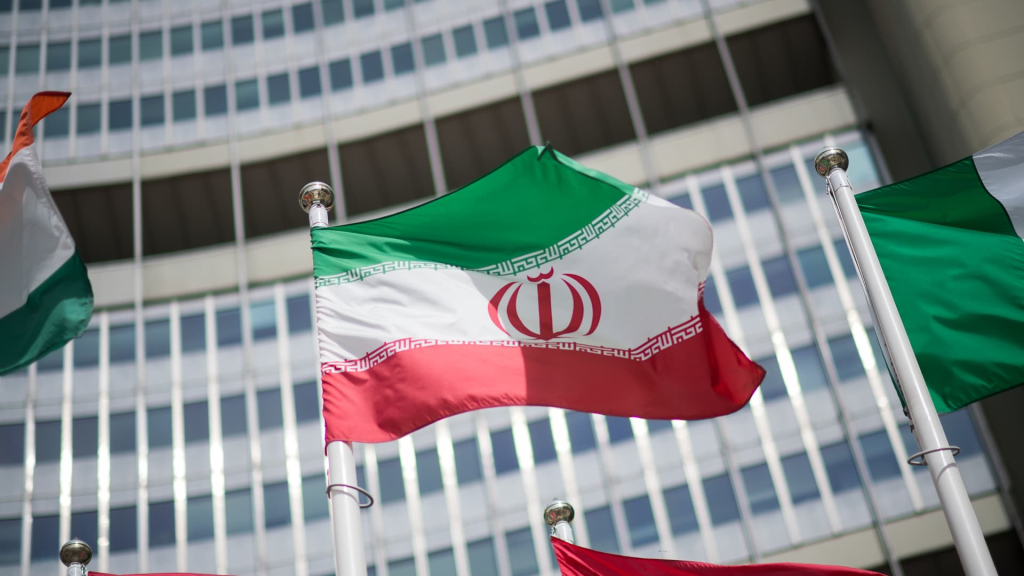DUBAI, United Arab Emirates (AP) — Negotiations between Iran and the United States regarding Tehran’s rapidly advancing nuclear program continued with a fourth round of discussions on Sunday. This meeting comes just days before President Donald Trump’s scheduled visit to the Middle East.
The dialogue lasted approximately three hours in Muscat, Oman, which has been facilitating the talks, according to a U.S. official. Iranian Foreign Ministry spokesperson Esmail Baghaei confirmed the duration of the talks, adding that both parties are considering the timing of their next meeting.
Baghaei described the negotiations as “difficult but useful,” while the U.S. official, who spoke on condition of anonymity due to the sensitive nature of the discussions, characterized the interactions as incorporating both indirect and direct communication.
“Agreement was reached to move forward with the talks to continue working through technical elements,” the U.S. official stated. “We are encouraged by today’s outcome and anticipate our next meeting will take place soon.”
Iran, however, contended that the discussions were strictly indirect, possibly reflecting internal political tensions within the Islamic Republic.
The primary objective of the negotiations is to constrain Iran’s nuclear activities in exchange for some relief from the extensive economic sanctions that the U.S. has enforced on the country for nearly half a century.
Trump has consistently warned that he may resort to military action to target Iran’s nuclear ambitions if an agreement is not reached. Iranian officials are increasingly vocal about the possibility of seeking a nuclear weapon, particularly as they enhance their uranium enrichment activities to levels close to those suitable for weapons production. In response, Israel has also threatened preemptive strikes on Iran’s nuclear facilities, further escalating regional tensions heightened by the ongoing Israel-Hamas conflict.
Iranian state television confirmed the initiation of the talks, but there was no immediate response from U.S. officials.
The fourth round comes ahead of Trump’s trip
The latest talks again involved Iranian Foreign Minister Abbas Araghchi and U.S. Mideast envoy Steve Witkoff at the forefront. Although the two have engaged in face-to-face meetings, most communication has been indirect, facilitated by Omani Foreign Minister Badr al-Busaidi.
Iran maintains that the nation’s ability to enrich uranium is a non-negotiable red line. Witkoff’s earlier remarks suggested that a uranium enrichment level of 3.67% could be feasible, but he later indicated that all enrichment activities must cease entirely.
“An enrichment program can never exist in the state of Iran ever again,” Witkoff declared to the right-leaning Breitbart news site in an interview published on Friday. “That’s our red line. No enrichment. This includes dismantlement, prohibiting weaponization, and the dismantling of their three key facilities: Natanz, Fordow, and Isfahan.”
Countering this, Araghchi reiterated that enrichment remains a fundamental right of the Iranian people. “This achievement is not open for negotiation or compromise. The blood of our nuclear scientists has been shed for it, and we have endured a heavy price to secure it,” Araghchi emphasized, stating the country’s unwavering stance.
The 2015 nuclear agreement limited Iran’s enrichment to 3.67% and its uranium stockpile to 300 kilograms (661 pounds), sufficient for civilian nuclear power but far below the weapons-grade threshold of 90%. Since the collapse of this deal in 2018, following Trump’s withdrawal from the accord, Iran has escalated its enrichment activities, reaching up to 60% purity, only a technical step away from weapons-grade levels. Tensions in the region have also risen recently, evidenced by various incidents at sea and on land.
Iran faces pressures at home as talks continue
Amid these negotiations, Iran is also grappling with domestic challenges exacerbated by sanctions. The nation’s struggling rial currency has appreciated due to the talks, rallying from over 1 million to $1 down to approximately 830,000 to $1.
Despite these positive movements, both sides still seem far from finalizing any agreement, especially with Trump reportedly imposing a two-month deadline that coincides with his upcoming trip to the Middle East. Trump’s letter to Iran’s Supreme Leader, Ayatollah Ali Khamenei, was delivered by an Emirati diplomat, setting the deadline around the time of his departure from Washington.
The political climate within Iran remains volatile, especially surrounding the mandatory hijab law, with many women continuing to defy it on the streets. Additionally, conflicting reports about potential increases in subsidized gasoline prices are raising fears of renewed civil unrest.
The previous round of talks in Oman, held on April 26, coincided with a devastating explosion in southern Iran that claimed numerous lives and left thousands injured. The cause of the blast at the Shahid Rajaei port remains unexplained, although it was linked to a shipment of missile fuel components destined for the Islamic Republic.
Associated Press writer Nasser Karimi in Tehran, Iran, contributed to this report.


























